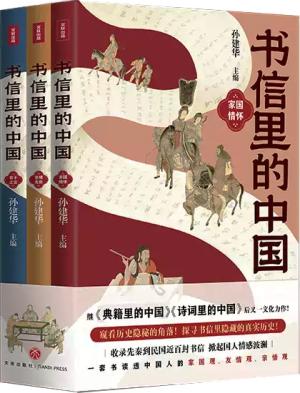新書推薦:

《
新民说·经济学家的恶习
》
售價:NT$
214.0

《
阅世奇言:靖康生死局
》
售價:NT$
347.0

《
前浪后浪:近代中国知识分子的精神世界
》
售價:NT$
449.0

《
八路军史
》
售價:NT$
500.0

《
美味简史
》
售價:NT$
245.0

《
书信里的中国(全三册,家国情怀+亲情无价+君子之交)
》
售價:NT$
609.0

《
带团队
》
售價:NT$
347.0

《
女王冠:三位女性的权力与生存之战
》
售價:NT$
500.0
|
| 內容簡介: |
本書為《國際貿易》英文版內容,由於西方國家在國際貿易理論研究領域起步較早,《國際貿易》所選經典國際貿易理論模型最初均為英文版本,譯文即便再力求精準,也難以完全避免因譯者的主觀理解和自身認知囿限而導致的偏誤,本著「認識一個事物最好是去認識其原本的樣子,而非別人認為的樣子」的理念,因此本書推薦給讀者結合《國際貿易》進行閱讀。
本書內容與《國際貿易》相同,第一章首先介紹世界經濟貿易發展的現狀和特點。接著從國際貿易理論和國際貿易政策兩個方面對國際貿易相關議題展開闡釋。國際貿易理論部分主要按照國際貿易發展的時間順序,介紹一系列經典的國際貿易理論模型。
第二章主要講解重商主義、絕對優勢理論和比較優勢理論等三個早期國際貿易模型,這些模型主要從生產的角度分析國際貿易產生的原因及可能的結果;第三章的主要內容是標準貿易模型,將消費納入到國際貿易分析中,從生產和消費的雙角度分析國際貿易現象;第四章介紹出口供給曲線、進口需求曲線、提供曲線和貿易條件,其中出口供給曲線和進口需求曲線主要用於某一商品的局部貿易均衡分析,而提供曲線為兩種商品的一般貿易均衡分析提供了便利,貿易條件概念的提出有助於分析貿易對一國或地區福利的影響;第五章的要素禀賦理論放鬆了對生產要素投入的限定,進一步揭示了國際貿易產生的根源;第六章將規模經濟和不完全競爭等現實因素考慮進來,分析了之前的貿易理論無法解釋的貿易現象;不同於之前各章主要在宏觀層面進行分析,第七章新新貿易理論從微觀視角分析國際貿易新現象和新特點;第八章經濟增長與國際貿易將分析從靜態轉變為動態,從發展的角度研究經濟各要素變化對國際貿易的影響。國際貿易政策部分主要介紹影響國際貿易的措施、政策,分析其影響機制和結果。
第九章以進口關稅為例分析關稅對貿易雙方的影響;第十章以出口補貼為例分析非關稅措施對貿易雙方的影響;第十一章介紹了其他主要非關稅措施的相關情況;第十二章以全球區域經濟一體化為切入點,闡釋了人們應對關稅及非關稅貿易壁壘、促進世界經貿發展的舉措,同時分析了其影響和各國或地區的應對。
|
| 目錄:
|
Chapter1AnIntroductiontotheWorldEconomyandTrade....1
1.1TheDevelopmentSituation...................1
1.1.1WorldTradeVolumesandWorldTradeComposition.........1
1.1.1.1WorldTradeVolumes...................1
1.1.1.2TheWorldTradeComposition................2
1.1.2MainTradeParticipants....................4
1.1.2.1TotalGoodsandServicesImportsandExports.........4
1.1.2.2GoodsandServicesImportsandGoodsandServicesExports...5
1.1.3TradeSituationinChinaandtheU.S...............7
1.1.3.1ForeignTradeinChina..................8
1.1.3.2ForeignTradeintheU.S.................11
1.2FeaturesofWorldEconomyandTrade..............15
1.2.1TheGrowthofWorldEconomyandTradeHaveBeenSlowingDown..15
1.2.2TradeParticipantsDifferentiatedSignificantly...........16
1.2.3MoreHigh-TechProductsandInformationProductsAreTraded....18
1.2.4TheGlobalValueChainIsUnderReconstruction,theCross-BorderE-CommerceIsGrowingRapidly................19
1.2.5TheTradeProtectionismHasBeenRising............20
1.2.6DevelopingandMiddle-IncomeCountriesHaveBeenIncreasingly
Active..........................20
PartⅠInternationalTradeTheory
Chapter2Mercantilism theTheoryofAbsoluteAdvantage,andtheTheo-ryofComparativeAdvantage..............25
2.1Mercantilism.........................25
2.1.1MainThoughtsofMercantilism.................25
2.1.2MainPoliciesofMercantilism.................25
2.1.3LimitationsofMercantilism..................26
Reading2.1..........................26
2.2TheTheoryofAbsoluteAdvantage...............27
2.2.1BasicAssumptions......................28
2.2.2AbsoluteAdvantage.....................28
2.2.3TheTheoryofAbsoluteAdvantage...............29
2.2.4LimitationsoftheTheoryofAbsoluteAdvantage..........30
Reading2.2..........................31
2.3TheTheoryofComparativeAdvantage..............32
2.3.1BasicAssumptions......................32
2.3.2OpportunityCost......................32
2.3.3ComparativeAdvantage....................32
2.3.4TheoryofComparativeAdvantage................34
2.3.5LimitationsoftheTheoryofComparativeAdvantage........35
Reading2.3..........................35
2.4DeterminingtheRelativePricewithFreeTrade..........36
Reading2.4..........................40
Chapter3TheStandardTradeModel...............41
3.1ProductionPossibilityFrontierPPF..............41
3.1.1TheShapeofPPF......................41
3.1.2Inefficient,MaximumandImpossibleCombinations........43
3.1.3TheShiftofPPF......................44
3.1.4TheMarginalRateofTransformationMRT...........46
SupplementaryContent3.1:ADerivationofPPFConstantCosts.....47
Reading3.1..........................50
3.2CommunityIndifferenceCurvesCIC..............51
3.2.1Definition.........................51
3.2.2CharacteristicsofCommunityIndifferenceCurves.........52
3.2.3TheMarginalRateofSubstitutionMRS............54
3.3EquilibriuminIsolation.....................54
3.4Production,Consumption,andtheRelativePrice.........56
3.4.1ProductionandtheRelativePrice...............56
3.4.2ConsumptionandtheRelativePrice...............57
3.5TheTradePatternandTradeGain...............58
3.5.1ConstantCosts.......................59
3.5.2IncreasingCosts.......................60
3.6EquilibriumwithTrade.....................62
3.7IncompleteSpecialization....................63
3.8ConsumerPreferencesandInternationalTrade..........64
Reading3.2..........................66
Chapter4ExportSupplyCurves,ImportDemandCurves,OfferCurves,andtheTermsofTrade................67
4.1ExportSupplyCurves.....................67
4.2ImportDemandCurves.....................68
4.3ThePartialEquilibriumwithTrade................70
4.4OfferCurvesandtheGeneralEquilibriumAnalysis.........71
Reading4.1..........................74
Reading4.2..........................75
4.5PartialEquilibriumandGeneralEquilibriumAnalyses........76
4.6TheTermsofTrade......................78
Reading4.3..........................79
Chapter5FactorEndowmentsandtheHeckscher-OhlinTheory..80
5.1AssumptionsoftheH-OModel.................80
5.2Isoquants...........................81
5.2.1DefinitionandDerivation...................81
5.2.2CharacteristicsofIsoquants..................81
5.2.3TheMarginalRateofTechnicalSubstitutionMRTS.......83
SupplementaryContent5.1:TwoSpecialCasesofIsoquantCurves......84
5.2.4TheRelationshipBetweentheFactorInputRatio FactorPrices and
ProductionCosts......................85
5.3FactorIntensity........................86
5.4FactorAbundance.......................87
5.5FactorIntensity FactorAbundance andtheShapeofPPF....88
5.5.1TheShapeofPPFsinHomeandForeign............88
5.5.2TheRelativeLocationofPPFsinHomeandForeign........89
5.6TheH-OModelandtheH-OTheorem..............90
5.6.1TheMainContentofH-OTheorem...............91
5.6.2AGraphicalIllustrationoftheH-OTheorem...........91
Reading5.1..........................93
5.7TheH-O-STheorem......................93
SupplementaryContent5.2:InternationalFactorMobility.........95
5.8TheEffectofTradeonIncomedistribution............97
Reading5.2..........................98
Reading5.3..........................98
5.9TheLeontiefParadoxandItsExplanations............99
5.9.1TheLeontiefParadox....................99
5.9.2ExplanationsoftheLeontiefParadox..............100
5.9.2.1AnExplanationfromthePerspectiveofTheoreticalBase....100
5.9.2.2AnExplanationfromthePerspectiveofHumanCapital....100
5.9.2.3AnExplanationfromthePerspectiveofR&D........100
5.9.2.4AnExplanationfromthePerspectiveofFactorIntensity
Reversal.......................101
5.9.2.5AnExplanationfromthePerspectiveofTariffPolicies.....101
5.9.2.6AnExplanationfromtheDynamicPerspective........101
Chapter6EconomiesofScale ImperfectCompetition andInternational
Trade.........................103
6.1EconomiesofScaleandInternationalTrade...........103
6.1.1ReturnstoScaleandEconomiesofScale............103
6.1.2EconomiesofScaleandProductionPossibilitiesFrontier......104
6.1.3EconomiesofScaleandExternalEconomies...........104
Reading6.1..........................105
6.1.4EconomiesofScale theInternationalTradePattern andGainsfrom
Trade..........................106
SupplementaryContent6.1:CasesofExternalandInternalEconomiesof
Scale..................107
6.2ImperfectCompetitionandInternationalTrade..........108
6.2.1ImperfectCompetition....................108
Reading6.2..........................108
6.2.2TheIntra-IndustryTradeIndexIIT.............109
Reading6.3..........................110
6.3DynamicTechnologicalDifferencesandInternationalTrade....111
6.3.1TheTechnologicalGapModel.................112
Reading6.4..........................112
6.3.2TheProductLife-CycleModel................114
6.4TheNewEconomicGeographyTheoryandInternationalTrade...115
Reading6.5..........................116
6.5EnvironmentStandardsandInternationalTrade..........117
Reading6.6..........................118
Chapter7TheNew-NewTradeTheory..............121
7.1TheNew-NewTradeTheoryandItsDevelopment........121
7.1.1TheTradeModelwithHeterogeneousFirms...........121
7.1.2TheEndogenousBoundaryModelofFirms............122
7.2What`sNewintheNew-NewTradeTheory AComparisonoftheTraditionalTradeTheory,theNewTradeTheory,andtheNew-NewTradeTheory........................123
7.2.1ResearchSubjectsAreDifferent................123
7.2.2TheoreticalAssumptionsAreDifferent.............124
7.2.3TheoreticalCoresAreDifferent................125
7.2.4SourcesofTradeBenefitsandTradePoliciesAreDifferent.....125
7.3TheValueoftheNew-NewTradeTheory............126
7.4LimitsoftheNew-NewTradeTheory..............126
7.5PolicyImplicationsoftheNew-NewTradeTheory........127
Reading7.1..........................128
Chapter8EconomicGrowthandInternationalTrade.......129
8.1GrowthofFactorsofProductionandEconomicGrowth......129
8.1.1CapitalandLaborGrowSimultaneouslyandKLIsUnchanged...130
8.1.2CapitalGrowsandLaborIsUnchanged.............131
8.1.3LaborGrowsandCapitalIsUnchanged.............132
8.1.4CapitalandLaborGrowSimultaneouslyandKLRises......134
8.1.5CapitalandLaborGrowSimultaneouslyandKLDrops......136
Reading8.1..........................138
8.2TechnicalProgressandEconomicGrowth............139
8.3EconomicGrowthandInternationalTrade............143
8.3.1EconomicGrowth ConsumptionChanges andTradeScale.....143
8.3.2EconomicGrowthandInternationalTradeTheSmall-CountryCase..........................146
8.3.3EconomicGrowthandInternationalTradeTheLarge-CountryCase..........................148
8.3.4ImmiserizingGrowth....................151
Reading8.2..........................152
PartⅡInternationalTradePolicy
Chapter9Tariffs.........................155
9.1DefinitionandClassificationofTariffs..............155
9.1.1TariffsClassifiedbyCommodityFlows.............155
9.1.1.1ImportDuty......................155
9.1.1.2ExportDuty......................156
9.1.1.3TransitDuty......................156
9.1.2TariffsClassifiedbyCollectionMethods.............156
9.1.2.1AdValoremTariff...................156
9.1.2.2SpecificTariff.....................156
9.1.2.3CompoundTariff....................156
9.1.2.4AlternativeTariff....................157
9.1.2.5SlidingTariff.....................157
9.1.3TariffsClassifiedbyPurposes.................157
9.1.3.1RevenueTariff.....................157
9.1.3.2ProtectiveTariff....................157
9.1.4TariffsClassifiedbyDifferentialTreatments...........157
9.1.4.1ImportSurtax.....................157
9.1.4.2VariableLevy.....................158
9.1.4.3PreferentialDuty....................158
9.1.4.4GeneralizedPreferentialDuty...............158
9.2EffectsofImportDutiesASmall-CountryCase........158
9.3EffectsofImportDutiesALarge-CountryCase........163
9.4EffectsofImportDutiesontheExportCountry..........166
9.4.1ASmall-CountryCase....................166
9.4.2ALarge-CountryCase....................166
9.5NominalandEffectiveRatesofProtection............167
9.5.1NominalRateofProtection..................168
9.5.2EffectiveRateofProtection..................168
Reading9.1..........................169
Chapter10ExportSubsidies...................172
10.1TheDefinitionofExportSubsidy................172
10.2EffectsofExportSubsidiesASmall-CountryCase......172
10.3EffectsofExportSubsidiesALarge-CountryCase......174
10.4EffectsofExportSubsidiesontheImportCountry........176
10.4.1ASmall-CountryCase...................176
10.4.2ALarge-CountryCase...................176
Reading10.1.........................177
Chapter11Non-TariffTradeBarriers..............180
11.1GreenBarriers,TechnicalBarriers,andAntidumpingBarriers...180
11.1.1GreenBarriers......................180
Reading11.1.........................180
Reading11.2.........................182
11.1.2TechnicalBarriers.....................182
Reading11.3.........................183
11.1.3AntidumpingBarriers...................184
Reading11.4.........................185
11.2OtherFormsofNon-TariffTradeBarriers............185
11.2.1LicensesandQuotas....................185
11.2.2Customs&AdministrativeEntryProcedures..........186
11.2.3ImportProhibition.....................189
Reading11.5.........................189
11.2.4DiscriminationAgainstImportedProducts...........189
Reading11.6.........................190
11.2.5ExportRestrictions....................190
11.3CharacteristicsofNon-TariffTradeBarriers...........191
11.4EffectsofNon-TariffTradeBarriersonDevelopingCountriesand
DevelopingCountriesCountermeasures............192
11.4.1EffectsofNon-TariffTradeBarriersonDevelopingCountries....192
11.4.2DevelopingCountries Countermeasures............193
11.4.2.1InnovateTechnologiesandImprovetheQualityofGoodsandServices.......................193
11.4.2.2ToBeConsistentwithInternationalStandardsandCooperateActively
withtheRestofWorld.................193
11.4.2.3FullyUnderstandtheImportingMarketsandLocalPolicies..193
11.4.2.4ExpandDomesticDemandandReducetheDependenceontheInternationalTrade..................194
11.4.2.5ProtectNationalLegitimateRightsandInterests.......194
Chapter12GlobalandRegionalEconomicIntegration......195
12.1GlobalandRegionalEconomicIntegrationOrganizations.....195
12.1.1WorldTradeOrganizationWTO..............195
12.1.2EuropeanUnionEU...................196
12.1.3NorthAmericanFreeTradeAgreementNAFTA........197
Reading12.1.........................197
12.1.4Asia-PacificEconomicCooperationAPEC..........198
12.1.5AssociationofSoutheastAsianNationsASEAN........199
12.1.6OrganisationforEconomicCo-operationandDevelopmentOECD.200
12.1.7BRICS.........................200
12.1.8TheBeltandRoadB&R.................201
Reading12.2.........................202
12.2TheTrendofGlobalandRegionalEconomicIntegration.....203
12.2.1RegionalEconomicIntegrationTendstoAccelerate........203
12.2.2TheCross-RegionalCooperationDevelopsFast.........203
12.2.3FTAsBecometheMainFormofRegionalEconomicIntegration...204
12.2.4TheDeepCooperationBecomestheMainstream.........204
12.2.5DevelopedEconomiesPlaytheLeadingRoleinRegionalEconomicIntegration........................204
12.2.6DevelopingCountriesAcceleratetheRegionalEconomicIntegrationProcess.........................205
12.2.7TheAsia-PacificRegionHasBecometheFocusofFreeTradeAreaConstruction.......................205
Reading12.3.........................206
12.3InfluencesofRegionalEconomicIntegration..........207
12.3.1OnTradeLiberalization...................207
12.3.2OnGlobalCapitalFlowsandIndustrialStructureOptimization...207
12.3.3OnGlobalEconomicandTradeOrdersandOperationRules....208
12.3.4OntheGlobalTradePattern.................208
12.4CountermeasuresbyDevelopingCountriestoDealWithGlobaland
RegionalEconomicIntegration................209
12.4.1ActPositively......................209
12.4.2AdapttoGlobalandRegionalEconomicIntegrationRulesQuickly.209
12.4.3ParticipateintheInternationalCooperationandInternationalTradeActively.........................210
12.4.4StrengthentheAwarenessofRiskPreventionandSafeguardtheNationalEconomicandFinancialSecurity...............210
12.4.5AppreciateTalentsandInnovation..............210
|
|










